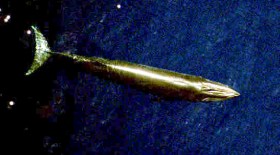Facts About Bryde's whale
Bryde's whales are captivating cetaceans that belong to a group referred to by scientists as the Bryde's whale complex. This group likely encompasses two or three species of large whales known as rorquals. Within this complex, there is the common Bryde's whale, which inhabits warm temperate and tropical waters globally. Additionally, there is the smaller Sittang or Eden's whale, which may be confined to the Indo-Pacific region. Further, there are smaller coastal forms found off southern Africa and possibly within the Indo-Pacific. Notably, Omura's whale, once considered a pygmy Bryde's whale, is now recognized as a distinct species.
The classification of Bryde's whales remains ambiguous. Scientists have identified two genetically distinct entities: the Bryde’s whale (B. brydei) and Sittang or Eden's whale (B. edeni). The journey to accurately classify these whales has been complex, involving numerous scientific studies and comparisons that eventually delineated these potential species.
Bryde's whales are moderately sized rorquals, known for their distinctive characteristics, behaviors, diets, and habitats. These baleen whales feature notable attributes such as twin blowholes, baleen plates, and elongated, streamlined bodies. They exhibit interesting behaviors, including irregular surfacing patterns, diverse feeding methods, and specific breeding habits. Their diet is quite varied, comprising fish, crustaceans, and cephalopods, which varies according to their geographic location.
Bryde's whales can be found in the Atlantic, Pacific, and Indian Oceans, with distinct populations in various regions. The global population of Bryde's whales is estimated to be between 90,000 to 100,000, most of which reside in the Northern Hemisphere. Various conservation efforts, supported by international agreements and organizations, are in place to protect these whales.
In the past, Bryde's whales were extensively hunted during commercial whaling activities. Today, they continue to face considerable threats such as ship strikes, noise pollution from human activities, and accidental entanglements in fishing gear. Conservation measures are essential to mitigate these risks and ensure the continued survival of Bryde's whales in their natural habitats.

 Brazil
Brazil